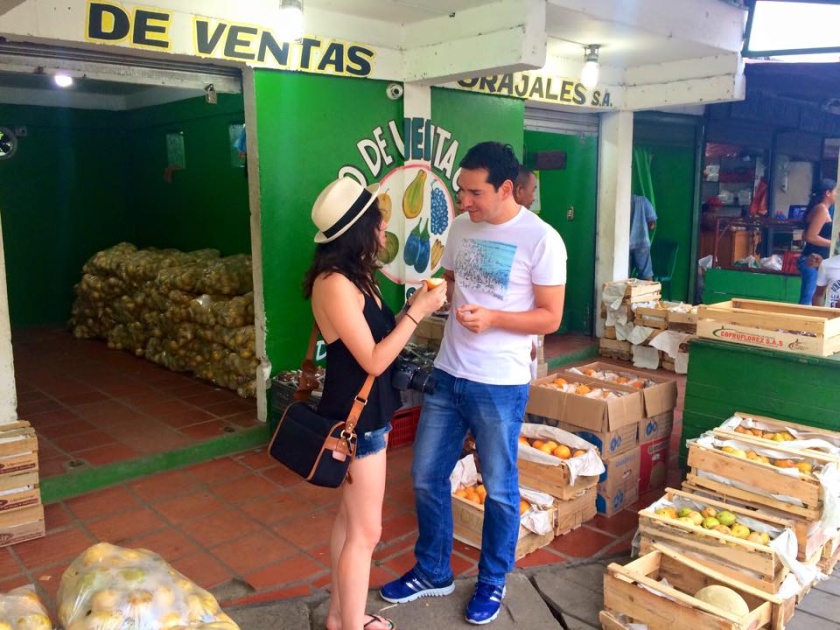My foray into the world of travel writing has been a wild ride that at times leaves me exhilarated with opportunities and at other moments leaves me downtrodden when things don’t pan out as hoped. Even with a degree in journalism under my belt, I am always learning new tricks when it comes to pitching editors, networking with other travelers and getting my stories published. Here, I share my best tips on breaking into that unpredictable, inspiring and beautiful world of being paid to write about travel. These are 8 tips on how to be a successful travel blogger.
- Guide for Buying and Using the Kobe Travel Smart Passport
- How much does a trip to Paris cost: The details of Paris Travel Costs (Traveling, Food, Stay & MORE)
- China requirements for entry: China travel entry requirements, Visa, Regulations, Tips & MORE
- Narita vs Haneda Airport Transfer: How to get from Narita Airport to Downtown Tokyo & From Haneda To Tokyo City
- Malaysia tourist entry requirements: The latest Immigration regulations, tips & MORE
1. Start by Building Up Your Credentials
You may be an excellent writer with a great story to tell but in such a competitive field it is crucial to have your work published across various publications before approaching editors of larger publications. Although some might cringe at this advice, it is worth taking unpaid writing gigs to simply get your work out there in the beginning. When I first started blogging, I pitched Thought Catalog, Vagabondish, Bootsnall and more and while these opportunities were unpaid, I saw a dramatic increase in my site traffic and exposure to my blog and noticed how referencing my published work made a difference in securing future stories. Today, I have had published work in VICE, FOOD & WINE Magazine, Roads & Kingdoms and more; and for each of these larger publications I was able to reference those non-paying gigs from my early days of travel writing to help me secure the paying ones.
2. Finding the Right Story
What comes first—the story or the pitch? Some writers will tell you to simply go travel the world, let the stories come to you and then pitch them to editors. Others will say that it’s smarter to pitch ideas to editors in advance to ensure you’ll have a story and paycheck waiting for you at the end of your trip.
For my VICE story on the Mercado Bazurto in Cartagena, it took time for me to find a story I wanted to approach my editor with. For VICE, I know their publication to go for unique, off-the-beaten path stories and so looked for such an angle that I could cover while in Colombia. There is no by-the-book way to find your story as it takes a stroke of inspiration and passion to find a topic of interest; at the end of the day, how you find your story is up to you!
3. Tips for Successfully Pitching an Editor
Pitching an editor takes finesse, patience and understanding that they are dealing with hundreds of emails a day from writers around the world all eager to snag their attention. More often than not, when I send out a pitch I don’t expect to hear back unless the editor is immediately interested in my story, which even then could take a couple weeks. My journalism background taught me a few key ingredients to a successful pitch letter starting with the subject itself.
If an editor is scrolling through an inbox of countless emails, it is the unique subject lines that will grab their attention. Avoid labeling your pitch letter as “Pitch Query” or something eqaully generic because this will likely fall to the bottom of their Outlook. Similarly, pitch emails should be concise and clearly sum up the idea your are pitching the editor. In my pitch e-mails, I start out by briefly introducing myself and offering up my credentials, which is especially important when approaching an established publication such as FOOD & WINE or CN Traveler. Again, taking those non-paying, freelance gigs in the beginning will give you the leverage of referencing past published work. That brief intro then leads into the story I am offering to write. The pitch is kept short and sweet so that the overall e-mail is no more than a few sentences in length.
4. Don’t Neglect Your Own Blog
The balance between writing for other publications and keeping up my own website is a tightrope I am always walking. While some publications allow me to share a published article on my blog – allowing me to both get my writing out there and post fresh content to my website – others have stricter guidelines regarding stories being shared elsewhere.
My blog, The Pin the Map Project, is my passion and lifeline, it is the heart and soul of my travel writing and as a result I am always thinking of ways to take it to the next level. As you pitch editors, share your blog and reference all the great work you’re doing on your own site as it allows you to flex your writing muscles hone in on your craft!
5. Connect with Other Travel Writers & Journalists
The beauty of the travel community is that there is an endless supply of other writers and bloggers who are eager to swap stories, share tips and support fellow travelers. Whether you are reading and liking posts on Bloglovin’ or commenting on articles in your RSS feed, it’s clear that our community is one riddled with talented photographers, writers and social media mavens.
I recommend joining the Professional Travel Bloggers Association, International Travel Writer’s Alliance and signing up for Media Kitty. To start, the PTBA is an excellent resource that connects travel bloggers with people in the travel industry who may be interested in working with them. Likewise, the ITWA is a group that provides members with an ITWA press card to give them globally recognized credentials as well as connect them to industry partners, agencies and editors. Media Kitty is a service for journalists to find assignments, press trips & sources through quick & easy posting.
6. Where to Look for Travel Writing Gigs
You have the world at your fingertips – with a swipe of a finger you can read through hundreds of other travel blogs and with the click of a button you can follow the top travel brands. The internet is a treasure trove of information and when trying to break into travel writing, you need only look for opportunities to further your dream. Whether it’s a website looking for a new contributing travel writer, a community needing travel corespondents or a site in search of travel photography – there are opportunities out there to be had. Many times you can rely on social media to point you in the direction of these listings or you can use services like Media Kitty to lead you to assignments. In my case, I am often perusing social media, Media Kitty and the job board of MatadorU for tips on upcoming press trips, paid assignments and other travel related opportunities.
Did you know Living Nomads is also open for guest contributions? Check our out Contribute page for more info.
7. Becoming a Contributing Writer
It is easy enough to apply for a contributing writing role – you need only to come bearing fresh ideas and a unique angle on what you’d like to write about. Another (major) benefit to being a contributing writer for a larger publication are the opportunities to attend press trips and/or cover events on behalf of that brand. While as a solo blogger it may be difficult to snag a spot on an upcoming press trip, if representing a major site like The Daily Meal or VICE you’re more likely to be accepted. Case in point, I was offered a spot on a Visit Miami press trip on behalf of The Daily Meal this past September and just had a call this morning about an upcoming 2016 press trip to Chile!
Tip: If looking to land a press trip, Media Kitty is a great resource where PR contacts list upcoming press trips for journalists/bloggers to apply for. Most press trips require that you have an assignment or at least a media affiliation in order to be accepted for the trip – it is after all paid for in full so they want to ensure a story will come out of it. This is where being a contributing writer can be very helpful since you can pitch ideas to your editor and leverage the publication’s name.
8. Chasing Opportunities and Putting Yourself Out There
The best piece of advice I can offer a budding travel writer is to never let the fear of rejection outweigh the courage to chase an opportunity. Like most things in life, what we put into something is what we’ll get out of it and while all opportunities may not pan out and all emails may not be answered, it is only a matter of time before they do.































![10 best airports in Asia in 2016 [RANKED] kuala-lumpur-international-airport-best airports in asia in 2016 by skytrax ratings](https://livingnomads.com/wp-content/uploads/2016/08/29/kuala-lumpur-international-airport-best-airports-in-asia-in-2016-by-skytrax-ratings-218x150.jpg)






























